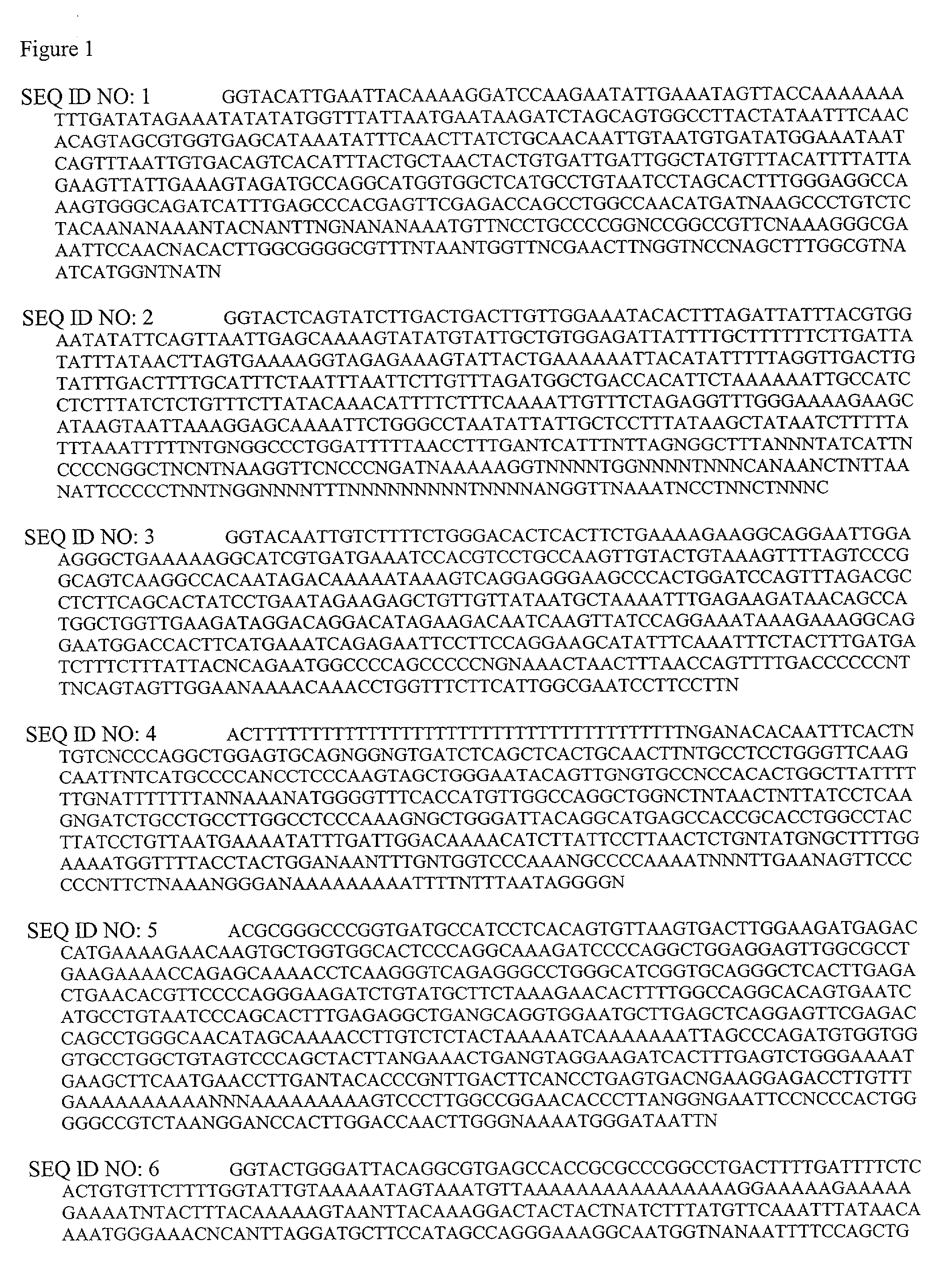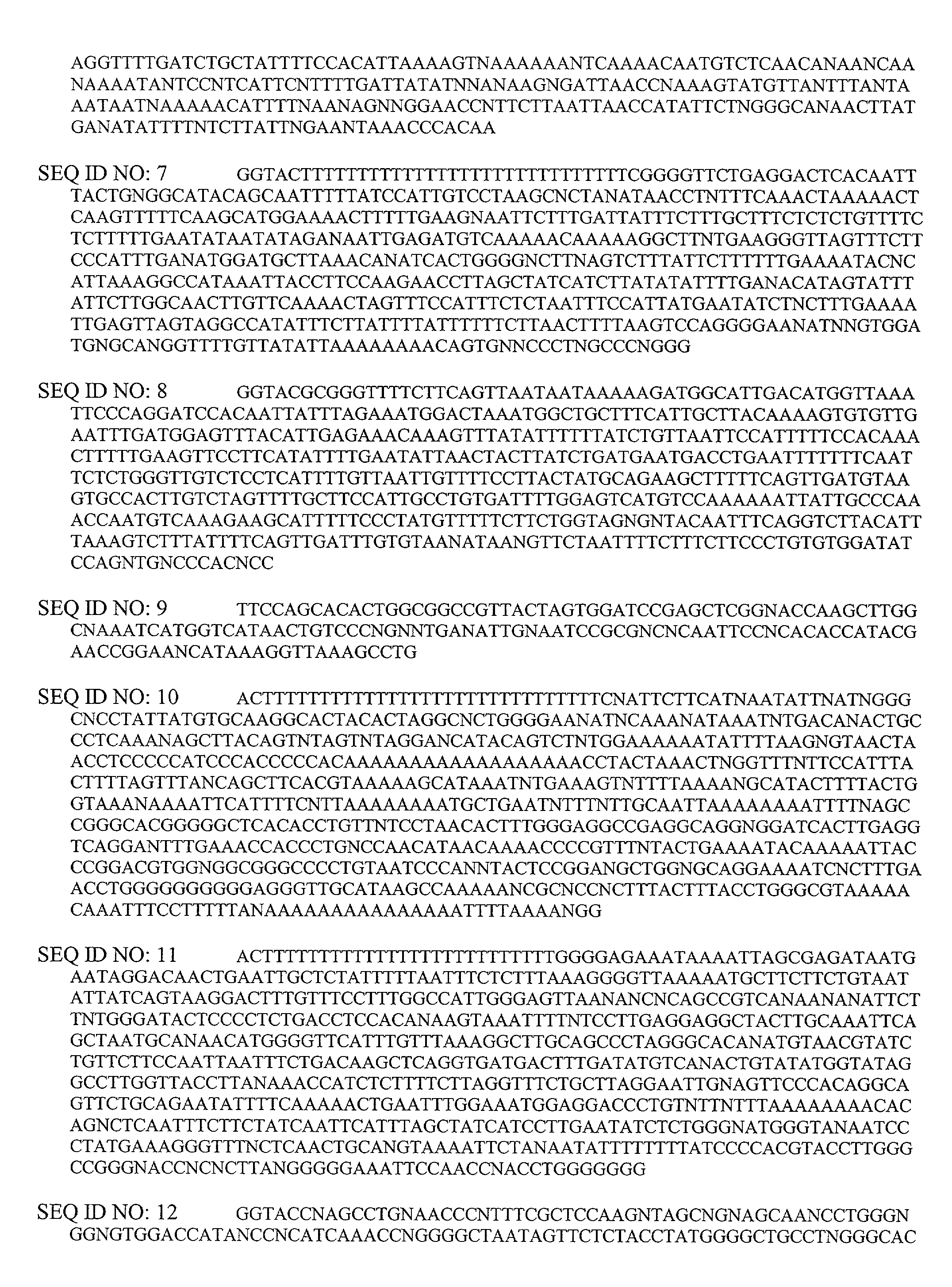Nucleic acid sequences differentially expressed in cancer tissue
a cancer tissue and nucleic acid technology, applied in the direction of depsipeptides, peptide/protein ingredients, fungi, etc., can solve the problems of inherently risky, uncomfortable, and expensive endoscopy, and achieve the effect of improving the prognosis of patients
- Summary
- Abstract
- Description
- Claims
- Application Information
AI Technical Summary
Benefits of technology
Problems solved by technology
Method used
Image
Examples
Embodiment Construction
[0332] A. Identification of Differentially Expressed Sequences.
[0333] Description of the Libraries
[0334] SEQ ID Nos: 1-4470 were derived from libraries designated as 101, 102, 103, 104, 109, 110, 111, and 112 as described below briefly and in the accompanying table (Table 1). For example, the 101 library is a normalized, colon cancer specific, subtracted cDNA library. It is specific for sequences expressed in colon cancer [proximal and distal Dukes' B, microsatellite instability negative (MSI-)] but not expressed in normal tissues, including normal colon tissue. The 102 library is a normalized, colon specific, subtracted cDNA library. It is specific for sequences expressed in normal colon tissue but not expressed in other normal tissues. Characteristics of the remaining libraries are described in Table 1.
2TABLE 1 Library designation and description Library Designation Description 101 Specific for sequences expressed in colon cancer (proximal and distal Dukes' B, MSI-) but not expres...
PUM
| Property | Measurement | Unit |
|---|---|---|
| temperature | aaaaa | aaaaa |
| temperature | aaaaa | aaaaa |
| temperature | aaaaa | aaaaa |
Abstract
Description
Claims
Application Information
 Login to View More
Login to View More - R&D
- Intellectual Property
- Life Sciences
- Materials
- Tech Scout
- Unparalleled Data Quality
- Higher Quality Content
- 60% Fewer Hallucinations
Browse by: Latest US Patents, China's latest patents, Technical Efficacy Thesaurus, Application Domain, Technology Topic, Popular Technical Reports.
© 2025 PatSnap. All rights reserved.Legal|Privacy policy|Modern Slavery Act Transparency Statement|Sitemap|About US| Contact US: help@patsnap.com



